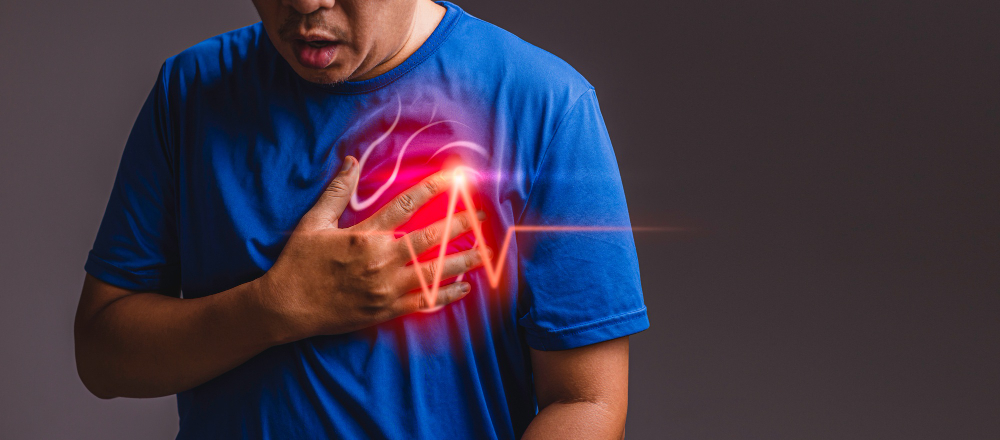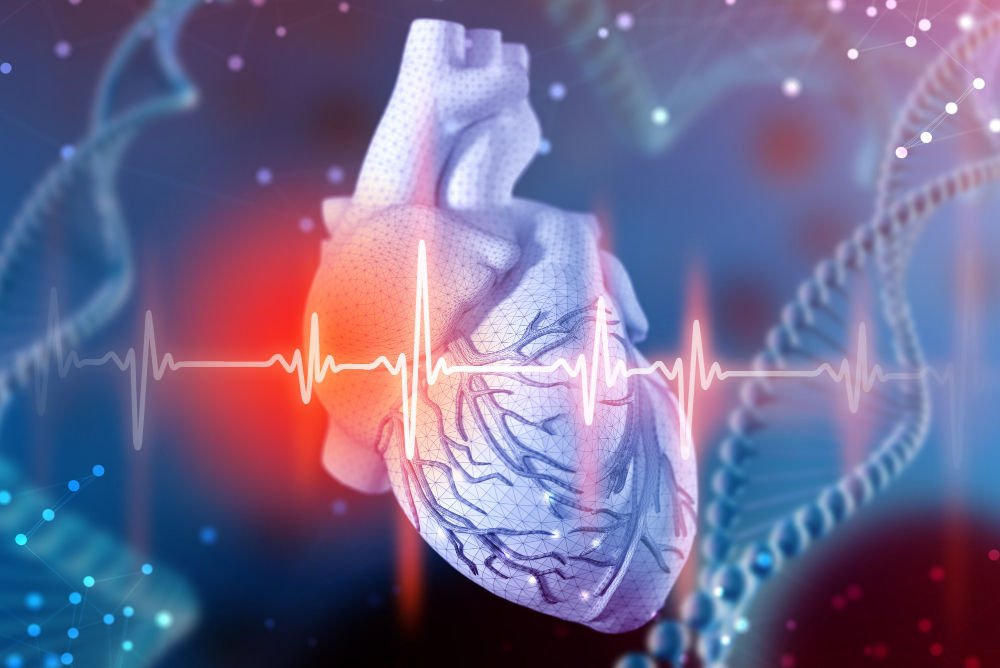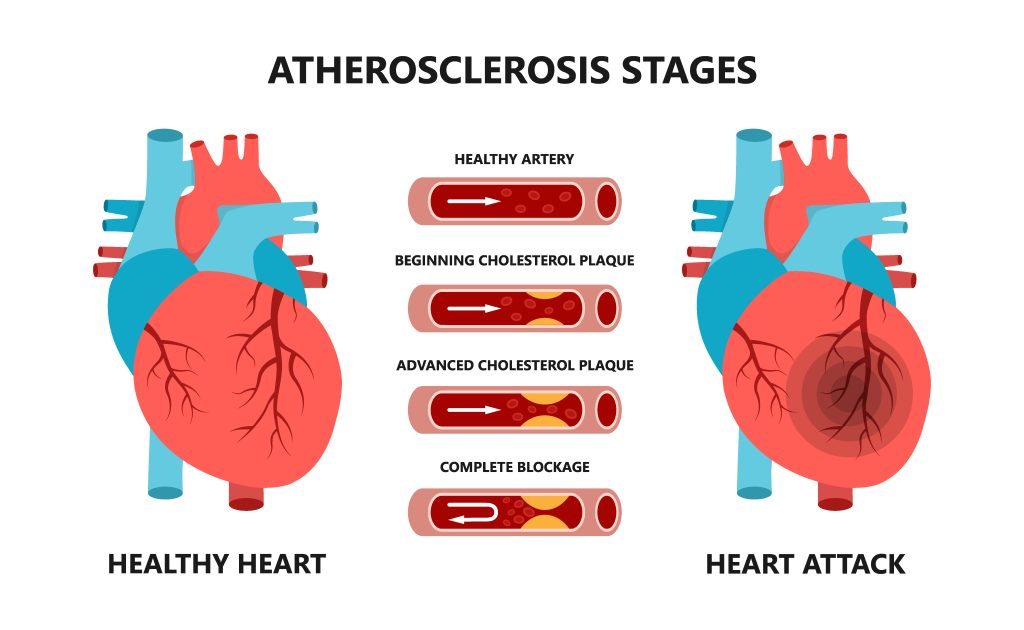What is a heart valve replacement?
Heart valve surgery involves repairing or substituting one or multiple valves among the four present in your heart. The valves, which are situated between the four chambers of your heart, maintain the proper circulation of blood. When the valves perform correctly, the blood should squeeze through your heart in a single direction each time it thumps.

The valves are comparable to doors that open and shut in synchronization with each heartbeat, creating a pathway for blood to flow in and out of the chambers. If a valve malfunctions, blood may re-enter the chamber it recently departed or become constricted, obstructing blood flow. This hinders the heart’s effectiveness, posing a challenge.
Your four heart valves are:
- The tricuspid valve enables deoxygenated blood to move from the upper chamber (right atrium) to the lower chamber (right ventricle) of the heart.
- The pulmonary system enables the transfer of deoxygenated blood from the lower chamber of the heart (right ventricle) to the lungs via the pulmonary artery to acquire oxygen.
- The mitral valve allows oxygenated blood returning from the lungs to flow from the upper left chamber of the heart into the lower left chamber.
- The aortic valve allows the flow of oxygenated blood from the lower left chamber (ventricle) of the heart into the aorta, which then distributes blood throughout the entire body.
Reasons for Replacement
The task of enabling the passage of blood rich in nutrients through the chambers of the heart lies with its valves. Once the blood flow is directed, each valve must fully shut. However, malfunctioning heart valves may not be able to complete this task effectively.
Stenosis, which is the constriction of blood vessels, leads to a reduced amount of blood being pumped to the heart, forcing it to work more. Leakages in valves can also cause issues where a valve doesn’t close tightly, which causes blood to flow in the wrong direction, termed as regurgitation. Symptoms of heart valve disease may involve:
- fatigue
- dizziness
- lightheadedness
- shortness of breath
- cyanosis
- chest pain
- The accumulation of fluids, particularly in the lower extremities.
Valvular heart disease can also be treated through heart valve repair. However, there are cases where the condition has already progressed to the point where a complete replacement of the damaged valve is the only viable solution.
Types of Valve Replacement Surgery
Aortic Valve Replacement
The aortic valve, situated on the left side of the heart, acts as an exit valve that lets blood flow out of the left ventricle, which is the heart’s primary pumping chamber. It also has the role of closing to prevent blood from flowing back into the left ventricle. If you suffer from a congenital abnormality or a disease that triggers stenosis or regurgitation, the aortic valve might require surgical intervention.
The bicuspid valve is the most prevalent type of congenital abnormality. The aortic valve is usually made up of three segments of tissue, known as leaflets, making it a tricuspid valve. However, if the valve is flawed, it will only have two leaflets, resulting in a bicuspid valve. According to a recent investigation, aortic valve replacement surgery results in a five-year survival rate of 94 percent. Survival rates are determined by a variety of factors.
- your age
- your overall health
- other medical conditions you have
- your heart function
Mitral Valve Replacement
The left side of the heart hosts the mitral valve which acts as an inflow valve. Its primary function is to facilitate the movement of blood from the left atrium to the left ventricle. In some cases, an individual may require surgery if the valve fails to open entirely or close completely. A too narrow valve can impede blood flow, resulting in lung pressure and backup. Alternatively, if the valve is unable to close correctly, blood can retreat back into the lungs. Poor valve performance can arise from a congenital defect, infection, or degenerative disease.
One option for replacing the faulty valve is to use either a metal or a biological substitute. While the metal version will last indefinitely, it does necessitate taking blood thinners. In contrast, the biological choice has a lifespan of 15 to 20 years, but does not require any blood-thinning medication. The likelihood of surviving for five years following surgery is roughly 91 percent.

Trusted Source
The factors below also contribute to the probability of living:
- your age
- your overall health
- other medical conditions you have
- your heart function
Request the assistance of your physician in evaluating your individual probabilities of potential harm.
Double Valve Replacement
Replacing both the mitral and aortic valve, or even the entire left side of the heart, is known as a double valve replacement. While this surgical procedure is not as frequently performed as others, the mortality rate associated with it is somewhat elevated.
Pulmonary Valve Replacement
The pulmonary valve is responsible for separating the pulmonary artery from the right ventricle, one of the chambers of the heart, ensuring that blood can flow to the lungs for oxygenation. Its primary function is to enable the movement of blood from the heart to the lungs via the pulmonary artery. An individual may require pulmonary valve replacement due to stenosis, which causes a restriction of blood flow. Stenosis can result from several factors, including congenital defects, infections, or carcinoid syndrome.
What happens during heart valve surgery?
- You will be administered medication intravenously in either your arm or hand to enable you to rest without any discomfort.
- Your medical practitioner will employ the tiniest possible cut for your operation.
- During your surgery, your heart and lungs may be replaced by a machine operated by your surgeon.
- Your healthcare provider will either fix or substitute your heart valve depending on the type of surgery you are undergoing.
Heart valve surgery options include:
- For conventional or non-minimally invasive cardiac surgery, a cut (measuring 6-8 inches) will be made in your sternum.
- A method of performing heart valve surgery that involves making a smaller cut, typically around 3-4 inches or less. This approach can be achieved through a variety of techniques, such as using endoscopic or keyhole methods (also known as port access, thoracoscopic or video-assisted surgery) or through the use of robotic assistance.
- Transcatheter involves inserting a catheter into a major artery such as the femoral artery located in the groin area, to perform the procedure without any surgical incisions made in the chest region.
Types of Heart Valves
Biological Valves
Valves that are based on biological materials (also referred to as tissue or bioprosthetic valves) are composed of:
- Cow tissue (bovine).
- Pig tissue (porcine).
- Human tissue (allografts or homografts).
Overall, there is no variation in the strength of different categories of biological valves. Certain biological valves might include artificial components to provide support and facilitate their installation.
Homograft Valves
A homograft (or allograft) is:
- A valve of the human heart obtained from a deceased donor.
- Typically utilized to substitute a damaged aortic valve in youths or individuals in their early adulthood, and also when an infection demolishes an aortic valve in older individuals.
- Additionally utilized to substitute the pulmonary valve in the Ross technique.
Mechanical Valves
The mechanical valves imitate the functions of natural valves and are composed of metal or carbon materials. The most widely used mechanical valve is the bileaflet valve, which consists of two carbon leaves positioned within a ring that has a covering of polyester knit material.
Mechanical valves are:
- Well-tolerated.
- Very durable.
- Designed to last a lifetime.

What are the benefits of undergoing heart valve surgery?
Surgery on the heart valves is a beneficial procedure that can alleviate your symptoms, enhance your longevity, and assist in avoiding mortality.
There are potential benefits to choosing heart valve repair instead of valve replacement.
- Lower risk of infection.
- There is less requirement for medication that thins the blood for the entire life.
The most frequently performed minimally invasive medical procedure is valve surgery, which can involve repairing or replacing valves.
Minimally invasive surgery offers advantages such as:
- Lower risk of infection.
- Less bleeding and trauma.
- Shorter hospital stay.
- Shorter recovery.
Recovery
Most individuals who undergo heart valve replacement surgery are hospitalized for around five to seven days, but those who undergo minimally invasive surgery might leave earlier. The healthcare team will provide pain relievers as necessary and regularly observe your blood pressure, breathing, and heart function in the initial few days following a heart valve replacement procedure.
The duration of your complete recuperation largely depends on the pace at which your body heals and the particular surgical procedure you underwent. After surgery, the risk of infection is the primary concern, hence maintaining sterility of your incisions is crucial. In case you exhibit any signs indicating infection, such as, reach out to your doctor immediately. Full restoration of your health may range from a few weeks to even a few months.
- fever
- chills
- Sensitivity or puffiness surrounding the area where a surgical cut was made.
- The draining from the area where the incision was made has gone up.
It is essential to attend your scheduled check-up appointments as they play a vital role in allowing your doctor to assess your ability to return to your daily routine. Prior to undergoing surgery, ensure that you have a support network to assist you during your recovery period. Request the help of your loved ones to assist you with household chores and drive you to medical appointments.
Treatment in Türkiye:
The medical staff of surgical teams, doctors and consultants in Rehab Türk can provide the best treatment options and free consultations – by striving to keep abreast of the latest medical technologies and methods.
